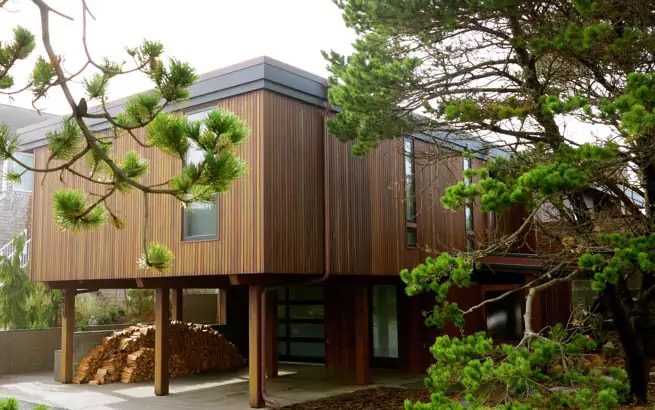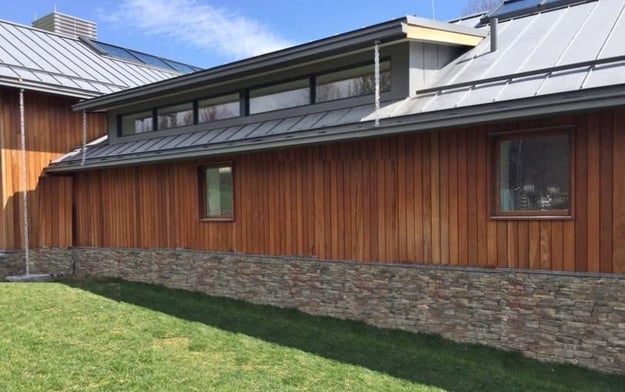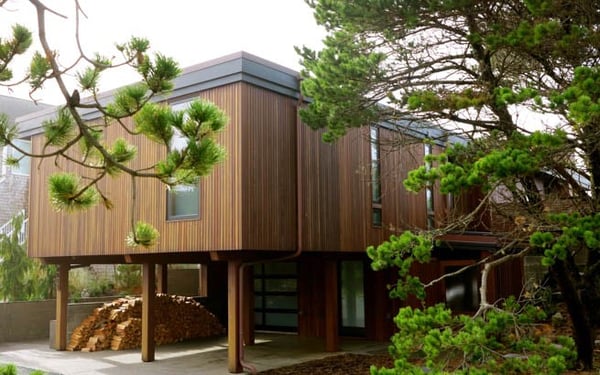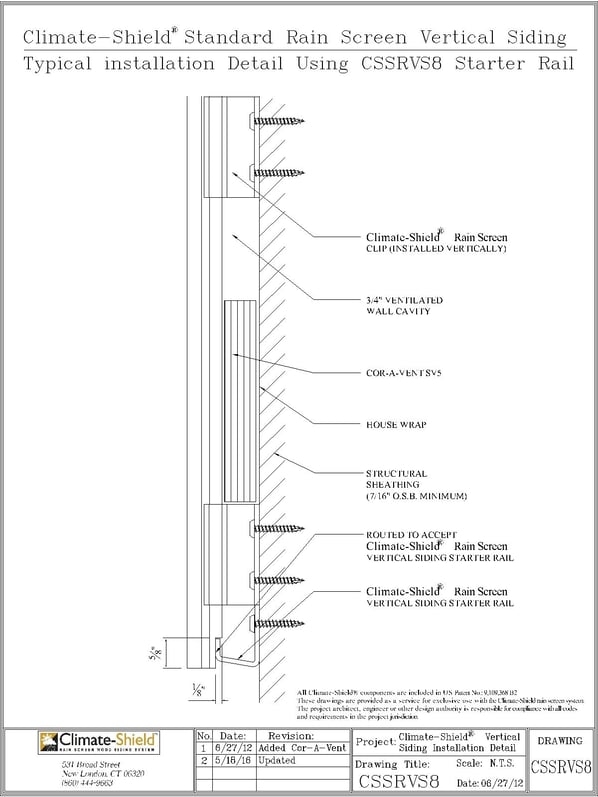
Related Posts



With most vertical wood rain screen designs it is usually necessary to install horizontal wood furring strips to attach the siding. This can be problematic for several reasons. Because an effective wood rain screen is an "open joint" system by design, there needs to be a way to let any bulk water intrusion to drain out. A horizontal furring strip prevents this from happening. This is not a good idea - especially when there are better options.
With a horizontal wood furring strip, any wind driven rain that gets behind the siding is a problem - they prevent gravity from draining the water out of the bottom. Even worse, once the trapped water is inside the wall cavity, it is absorbed by the wood furring strip. Since the water has nowhere else to go – and wood is hygroscopic (water absorbing) - the trapped water remains in place. This can lead to mold and eventually rot. As the furring strips rot, this can lead to mold growth inside the building envelope.

A much better way to install a vertical wood rain screen is to use a well-designed system that requires no wood furring strips. That way, there is no water trapped accumulating because it can drain out the bottom of the wall cavity freely. No trapped water means no way for mold to flourish. A dry wall is a healthy wall and an enduring wall.
The Climate-Shield® Rain Screen System™ requires no wood furring strips, even in a vertical siding installation. The design and installation flexibility of Climate-Shield makes it an outstanding option for vertical wood rain screen installations. From a performance standpoint and ease of installation, this system has no equals. The lower cost of installing the rain screen cladding combined with the extended life of the wall assembly provides the property owner with a good return on their investment both short term and long term.

To install wood rain screen cladding vertically using the Climate-Shield system requires a little bit of planning to ensure the best looks. The basic steps are to; determine the way you want your siding to lay out, install a level starter rail, notch the bottoms of the siding boards and then install with the Climate-Shield rain screen clips. Detailed rain screen installation guidelines can be found here for horizontal and vertical siding layouts.
Please visit MataverdeDecking.com for more information about Climate-Shield, rain screen design, wood siding options and more.
|
|


